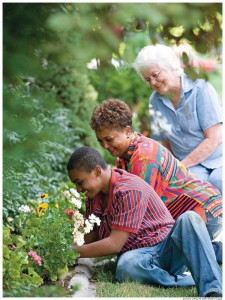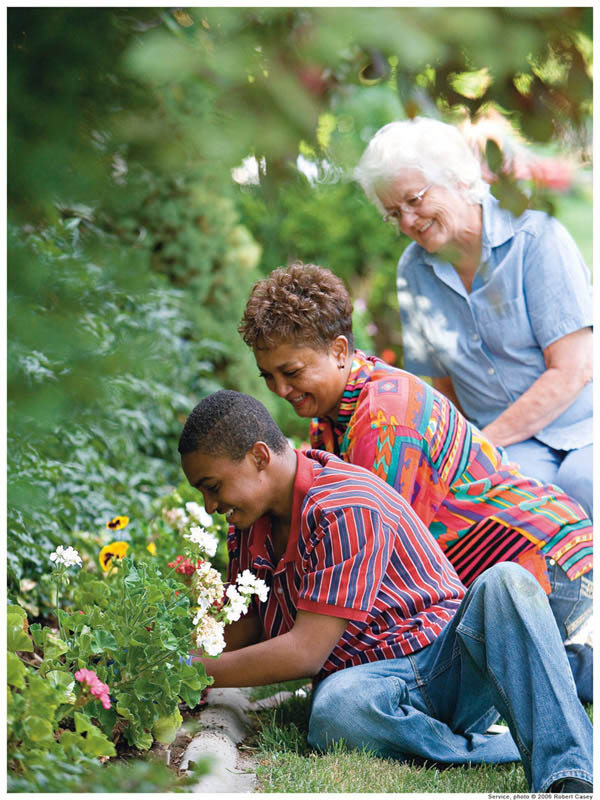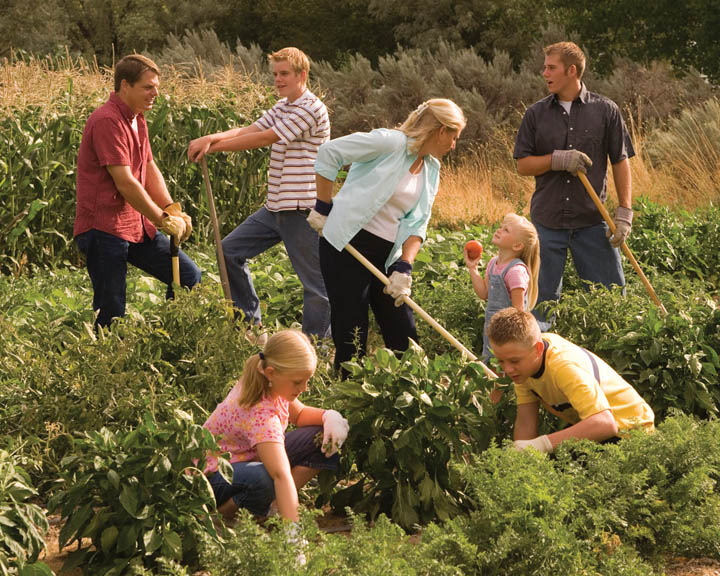My mother was an expert gardener. I knew it was really spring when she headed outside with her marigolds each year. Somehow that gene-and all the other domestic ones-bypassed me and everything I tried to grow died. Eventually, my children grew a large vegetable garden under the guidance of a family friend, and I stopped worrying about it. We moved a great deal in the later years, and gardening was not a priority.
 However, today, we seem more or less settled for a while and the gardeners have grown and moved on. Every year I talked about starting a garden, and this year I finally got brave enough to try. The Mormons are counseled to have a garden in order to increase their ability to be self-sufficient and it was time for me to get going on that part of the gospel.
However, today, we seem more or less settled for a while and the gardeners have grown and moved on. Every year I talked about starting a garden, and this year I finally got brave enough to try. The Mormons are counseled to have a garden in order to increase their ability to be self-sufficient and it was time for me to get going on that part of the gospel.
I chose containers, in case we find ourselves moving again. I also chose plants that were already growing, to give myself a head start. I decided to start small, so I didn’t get overwhelmed. To my surprise, this is turning out to be fun. Maybe it helps to be older, or maybe it’s just that I have adapted a more relaxed attitude this year. My self-esteem is not at stake this time. If it fails, it fails.
Here’s what I’ve learned so far:
1. Start small. Grow just a few things the first year to see how it feels. If you like it, add more the next year. It has to be easy at first, or you won’t keep it up.
2. Plant things you really like, even if they’re not supposed to be easy. You’re more likely to enjoy caring for them. I picked the marigolds because they remind me of my mom, who died last year. The others are things I like. I just keep picturing chocolate covered strawberries as I work. Motivation is important.
3. Containers minimize the actual work. There isn’t a lot of weeding to do and my work takes just a few minutes a day, and less if it rains.
4. The plants I bought in peat pots survived the transplant process. You just put the whole pot into the larger pot with more soil (which I purchased to cut out the weeds) and that apparently helps them avoid shock. Do whatever it takes to increase your success. You can choose cheaper options after you have confidence, if you want to.
5. Put the containers where you can see them. My plants are near where I park my car, so I see them every time I come and go. I can also see them from my desk, where I work all day as a writer. It’s harder to forget about them that way. Often having a black thumb really just means being absent-minded about plants.
6. Do a fair amount of reading about gardening, but don’t try to follow every bit of advice. I read lots of things that contradicted each other. I just picked what sounded good and manageable, and tried it. If it doesn’t work, I’ll try a different technique next year.
7. Don’t give up if everything doesn’t grow. I started with tulips, tomatoes, strawberries, and marigolds. The tulips died practically the minute I transplanted them and the tomato plant doesn’t look great, but the marigolds-some of which fizzled at first, but came back– and strawberries are doing beautifully, at least to my untrained eye. I choose to see that as a success. After all, even though only fifty percent of my plants are thriving, that is two more plants than I’ve ever grown before. (Really, it’s more than that, since there are two strawberry plants and eight marigolds.) It’s a start.
8. Cultivate friendships with gardeners who can advise you, preferably the kind who will cheer when you produce your first less than perfect strawberry.
9. Keep a full watering can right by the plants. The easier it is to water them, the more likely you are to do it. Often, as I’m passing by, I remember to check the moisture and can water them without having to go in and get water. If I go to get water, I tend to get distracted and never return. Buy a really cute watering can if you think it will help, but for myself, I just bought one that was huge.
10. You can’t frame your first strawberry, or even save it for long, so eat it. Take a picture first, if you’d like, but then enjoy it.
About Terrie Lynn Bittner
The late Terrie Lynn Bittner—beloved wife, mother, grandmother, and friend—was the author of two homeschooling books and numerous articles, including several that appeared in Latter-day Saint magazines. She became a member of the Church at the age of 17 and began sharing her faith online in 1992.






